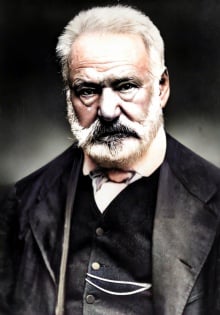Overview
Victor Hugo’s The Last Day of a Condemned Man is a stark, first-person chronicle of a prisoner awaiting execution by guillotine. Written as a series of dated or situational notebook entries, it strips away plot ornament to focus on the condemned man’s inner life, his fear, bargaining, rage, memories, and fitful hopes, during the weeks between his sentencing and the final hour. The narrator remains unnamed and his crime unspecified, an intentional effacement that turns him into an Everyman and shifts attention from guilt or innocence to the moral question of state killing. The book functions both as narrative and as a concentrated polemic against the death penalty, using the immediacy of the voice to keep the reader locked inside a single consciousness that knows it will be extinguished.
Narrative arc
From the first pages, the verdict has already fallen. The man is confined in a Paris prison, scrabbling for paper and pencil to leave a record. He alternates between wild schemes of escape and paralyzing submission. Time dilates: hours feel like days, days collapse into a blur. He measures existence in sounds, the footsteps of guards, the rumble of carts outside, the hammering that might be the scaffold rising. Hope flares whenever a legal technicality or petition seems possible; it gutters when officials arrive merely to inventory his effects or mark procedural steps toward death. He studies the mechanics of the guillotine in obsessive detail, reasoning that knowledge might blunt terror, and then recoils from his own curiosity.
Encounters and scenes
The entries are punctuated by visits that expose a spectacle culture orbiting the scaffold. A lawyer speaks in formulas and probabilities, a priest extends rote consolation the prisoner resists, philanthropists and curiosity-seekers peer at him as though he were already an exhibit. Other inmates appear as distorted mirrors: the mad, the resigned, the bravely joking. One fellow condemned man swings between bravado and collapse, revealing how the waiting erodes any stable self.
The most shattering scene is the visit from the prisoner’s young daughter, brought by his family. She does not recognize him in the prison setting and shrinks from his embrace. In a few lines, the narrator’s last tether to ordinary life frays: fatherhood, love, identity, all are canceled by the scaffold’s approach. Afterward his thoughts grow scattered, turning to childhood landscapes and trivial objects with a poignancy that heightens the horror of imminent extinction.
Hugo inserts, within or alongside the diary, vignettes of the execution-day crowd, treating public punishment as a carnival of cruelty. Street vendors, gossip, and morbid curiosity frame the guillotine as entertainment, indicting not only institutions but also the spectators who demand their show.
Themes and method
The book’s method is compression: a single voice, stripped of name and backstory, pressing against the boundary of speech itself. By refusing to specify the crime, Hugo blocks any calculus that would balance deed against penalty. The focus is instead on irreversibility, the state’s fallibility, and the degradation inflicted by a process that rehearses death minute by minute before finally delivering it. The style swerves from lucid argument to feverish fragments, mimicking the fluctuations of a mind besieged by dread. Time, identity, and dignity are the central stakes; the text shows how the machinery of punishment destroys them before the blade falls.
Ending
On the final morning, the formalities accelerate. The chaplain returns, guards tighten formation, documents are read. The condemned man is moved, loaded into the cart, and rolled through streets lined with faces. His senses narrow to texture and sound, the jolting wheels, the drumbeat of the crowd, while thought fractures into urgent, childlike appeals to live. The narrative breaks off at the brink, with the officials advancing and the scaffold looming. Silence completes the argument the words have prepared: the death penalty is not merely a moment of killing, but a prolonged annihilation of a human being, carried out in public and in advance.
The Last Day of a Condemned Man
Original Title: Le Dernier Jour d'un condamné
The Last Day of a Condemned Man is a powerful condemnation of the death penalty, centering on the final 24 hours in the life of a man sentenced to die by the guillotine. The unnamed protagonist's feelings of despair, loss, and hopelessness are presented in the form of a journal-like narrative.
Author: Victor Hugo
 Victor Hugo, the influential French author and politician known for classic literature like 'Les Miserables' and 'The Hunchback of Notre-Dame'.
Victor Hugo, the influential French author and politician known for classic literature like 'Les Miserables' and 'The Hunchback of Notre-Dame'.
More about Victor Hugo
 Victor Hugo, the influential French author and politician known for classic literature like 'Les Miserables' and 'The Hunchback of Notre-Dame'.
Victor Hugo, the influential French author and politician known for classic literature like 'Les Miserables' and 'The Hunchback of Notre-Dame'.